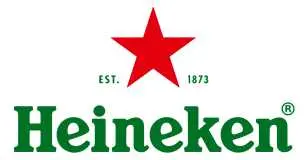
Luxury Furniture Market Share, Trends, Growth Drivers, Revenue, Business Challenges, Opportunities and Future Competition Till 2034: SPER Market Research
Category :
Consumer & Retail
Published: Jan-2025
Author: SPER Analysis Team
Luxury Furniture Market Share, Trends, Growth Drivers, Revenue, Business Challenges, Opportunities and Future Competition Till 2034: SPER Market Research
Global Luxury Furniture Market is projected to be worth 39.83 billion by 2034 and is anticipated to surge at a CAGR of 4.75%.
Luxury furniture is built of high-quality materials and available in a variety of designs. Metal, glass, wood, and other materials are among the most commonly used to manufacture these objects. The industry is primarily influenced by total consumer spending, as well as family debt levels, per capita income, and consumer expectations. The ever-increasing disposable income, rising living standards, and increased demand for furniture are all driving the luxury furniture market forward. Furthermore, the increasing popularity of home repair and décor among urban dwellers has supported business growth.
Drivers: The market for luxury furniture is growing due to higher incomes and more luxury furniture stores in developing countries. The global economy is also boosting wealth, especially among the rich, who are buying high-end furniture. Urbanization encourages people to buy custom furniture for their homes and workplaces, contributing to market growth. Social media and home renovation shows spark interest in interior design, increasing demand for unique luxury pieces. Additionally, consumers are looking for comfort and convenience, further driving the need for premium furniture.
Request For Free Sample Report @ https://www.sperresearch.com/report-store/luxury-furniture-market.aspx?sample=1
Challenges: The easy access to technology for making exact copies of luxury furniture can lower their quality, design, and finish. This situation can hurt a manufacturer's profits and make them less willing to invest in research and development. Counterfeit products are common worldwide, especially in developing countries with cheap manufacturing. Counterfeiting involves using a well-known brand's trademark on a product not made or approved by that brand. The increase in counterfeit sales has damaged brand images and reduced customer trust.
Market Trends: The luxury furniture market is embracing customisation and sustainability more and more to satisfy the shifting preferences of affluent consumers. The need for eco-friendly furniture made of bamboo and repurposed wood is growing as environmental responsibility becomes more and more important. Furthermore, the trend toward personalization is being driven by the need for distinctive, personalized furnishings, as wealthy consumers seek out pieces that demonstrate their own tastes and inclinations.
Global Luxury Furniture Market Key Players:
Bentley Home, Boca do Lobo, cassina, Furniture Concepts, Godrej & Boyce Manufacturing Co. Ltd, Haworth Inc, Heritage Home, Herman Miller, Inc, HNI, and IKEA are just a few of the major market players that are thoroughly examined in this market study along with revenue analysis, market segments, and competitive landscape data.
For More Information about this Report @ https://www.sperresearch.com/report-store/luxury-furniture-market.aspx
Global Luxury Furniture Market Segmentation:
By Product Type: Based on the Product Type, Global Luxury Furniture Market is segmented as; Table, Chair, Sofas & Lounges, Kitchen, Lightening, Interior accessories, Beds, Others.
By Distribution Channel: Based on the Distribution Channel, Global Luxury Furniture Market is segmented as; Online, Offline.
By Region: This research also includes data for North America, Latin America, Asia-Pacific, Europe, Middle East & Africa.
This study also encompasses various drivers and restraining factors of this market for the forecast period. Various growth opportunities are also discussed in the report.
Would you like to view the sample pages?
Get Sample PagesExplore Related Reports
Domains Served
Our Global Clients
Our data-driven insights have influenced the strategy of 200+ reputed companies across the globe.




































